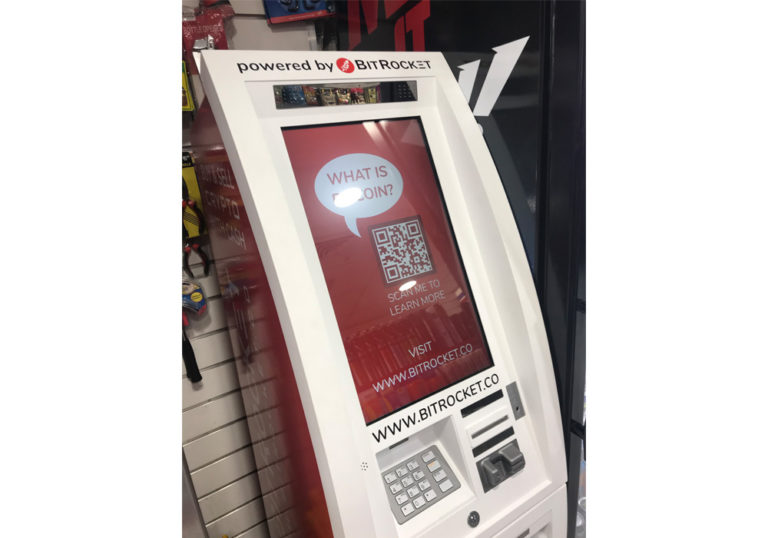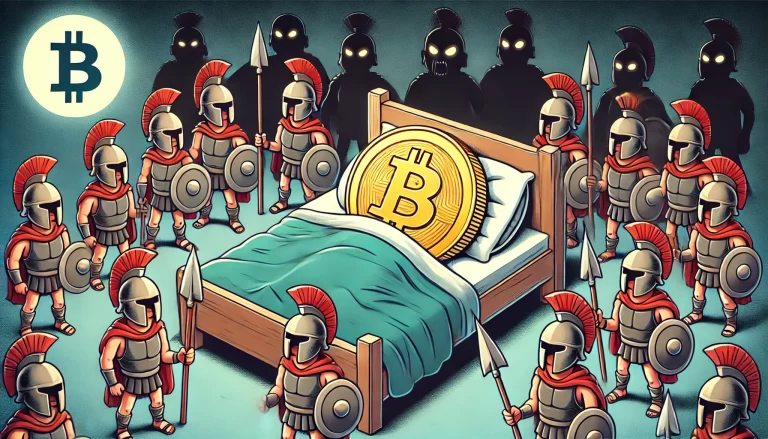Key Takeaways Summary
Selling Bitcoin in Australia involves careful preparation, choosing the right platform, and staying secure and compliant with tax laws and regulations.
Key Points:
- Preparation: Verify your exchange account and link your bank for smooth withdrawals.
- Platforms: Choose from Australian exchanges, international platforms, P2P marketplaces, or Bitcoin ATMs. Various platforms have covered different customer needs, such as selling small amounts of Bitcoin with ease.
- Process: Initiate the sell order, review fees, and withdraw AUD to your bank.
- After Sale: Keep records for capital gains tax (CGT) and stay updated on regulations.
- Security: Protect yourself from scams and secure your accounts.
————–
Bitcoin has become very popular in Australia. Many people invest in it, but there may come a time when you want to sell. You might need to cash out your profits, pay for expenses, or change your investment plan.
Selling Bitcoin can seem tricky if you’ve never done it before. This guide will help you understand every step. We’ll cover how to prepare, where to sell, and what to do after selling.
Let’s make selling Bitcoin simple and safe for you!
Introduction to Crypto Exchange
A cryptocurrency exchange is a platform that allows users to buy, sell, and trade cryptocurrencies, such as Bitcoin, for fiat currencies like Australian dollars (AUD). In Australia, several reputable crypto exchanges, including CoinSpot and BTC Markets, provide a secure and reliable way to convert Bitcoin to AUD.
To get started, users can create a free account on a crypto exchange. The process typically involves verifying your identity, which is a crucial step to ensure security and compliance with local regulations. You’ll need to provide a valid ID and proof of address. Once your identity is verified, you can deposit funds into your account using a bank transfer or other payment methods.
With a crypto exchange, users can easily sell Bitcoin and withdraw AUD. The platform allows you to transfer funds directly to your Australian bank account, making the process straightforward and convenient. Whether you’re looking to cash out your profits or cover everyday expenses, a crypto exchange offers a seamless way to manage your cryptocurrency transactions.
1. What Does It Mean to “Sell” Bitcoin?
When you sell Bitcoin, you are exchanging it for something else. Usually, this means converting it into Australian dollars (AUD). You can also trade Bitcoin for other cryptocurrencies, like Ethereum or stablecoins.
There are different ways to sell Bitcoin:
- Spot Selling: Selling your Bitcoin at the current market price.
- Peer-to-Peer (P2P) Selling: Selling directly to another person, often at a price you agree on.
Common Reasons Australians Sell Bitcoin
People sell Bitcoin for different reasons:
- Taking Profits: Selling when the price is high to cash out your gains.
- Paying for Expenses: Converting Bitcoin to cover everyday costs.
- Managing Risk: Reducing your Bitcoin holdings if the market seems risky.
- Rebalancing Investments: Adjusting your portfolio to keep it balanced.
Whatever your reason, knowing how to sell safely and easily is important.
Based on my personal experience, I recommend the these Australian exchanges:
2. Preparing to Sell Your Bitcoin
2.1 Ensuring You Have a Verified Exchange Account
Before you sell Bitcoin, you’ll need an account on a trusted exchange. Based on my experience, exchanges in Australia follow strict identity checks. This is to meet legal rules and keep your account safe.
To get verified, you usually need:
- A valid ID (like a driver’s licence or passport).
- Proof of address (such as a recent bill).
Tips for smooth verification:
- Make sure your ID details are clear and correct.
- Use high-quality photos of your documents.
- Double-check your personal details before submitting.
2.2 Linking Your Bank Account
To withdraw your money, you’ll need to link your bank account to the exchange. Based on my experience, this step can take a little time, so it’s best to do it early.
Steps to link your account:
- Go to your exchange’s settings or withdrawal section.
- Enter your bank account details.
- Verify your bank account (you may need to confirm a small deposit).
Tips to avoid delays:
- Use a bank account in your name.
- Double-check your BSB and account numbers.
- Be patient — verifications can take a few business days.
Personal tip: From my own experience with Australian banks, I maintain a dedicated, fee-free transaction account solely for crypto-related transfers. That way, if it’s ever blocked for any reason, my personal everyday account remains unaffected.
2.3 Securing Your Bitcoin
Security is key when selling Bitcoin. Based on my experience, a simple mistake can lead to lost funds.
Best practices for transferring Bitcoin to an exchange:
- Double-check the exchange’s wallet address before sending.
- Use a wallet with strong security features.
- Enable two-factor authentication (2FA) on your exchange account.
Minimising fees:
- Send your Bitcoin when network fees are low (often during off-peak hours).
Always wait for transaction confirmations on the blockchain before selling. This ensures your Bitcoin is safely in your exchange account.
3. Choosing the Right Platform
3.1 Australian-Based Exchanges
Using Australian-based exchanges is often the easiest way to sell Bitcoin. They offer good support, accept AUD, and follow local rules.
Popular options include:
- Independent Reserve: Trusted by many, offers competitive fees and PayPal integration.
- CoinJar: Simple to navigate, with fast AUD withdrawals.
- CoinSpot: Easy to use, good for beginners, but fees can be higher.
Each platform has pros and cons. Compare fees, withdrawal methods, and support before choosing.
3.2 International Exchanges Operating in Australia
Some international exchanges let Australians sell Bitcoin. Platforms like Binance have been popular, but changes in 2023 affected AUD withdrawals.
Based on my experience, international exchanges can offer lower fees but might have delays or restrictions with AUD withdrawals. Always check the latest policies before using these platforms.
3.3 Peer-to-Peer (P2P) Marketplaces
P2P platforms allow you to sell Bitcoin directly to another person. You can set your price and choose how you want to be paid.
How to sell safely on P2P:
- Use trusted platforms with good reviews.
- Always use escrow services to hold the Bitcoin until you get paid.
- Communicate clearly and stick to the platform’s rules.
P2P can be a good option if you want more control but be careful of scams.
3.4 Bitcoin ATMs and OTC Desks
Bitcoin ATMs let you sell Bitcoin for cash. They’re quick, but fees can be high, sometimes up to 8%.
OTC (Over-the-Counter) desks are for large trades, usually over $10,000. They offer personalised service and better rates for big transactions.
Based on my experience, ATMs are best for small, quick sales, while OTC desks suit high-value trades.
4. Step-by-Step: Selling Your Bitcoin
4.1 Initiating the Sell Order
Once your Bitcoin is on the exchange, you can start the selling process. Based on my experience, most platforms make this straightforward.
Steps to sell Bitcoin:
- Go to the “Sell” or “Trade” section of the exchange.
- Select Bitcoin (BTC) as the currency you want to sell.
- Choose how much you want to sell.
You can place a Market Order (sell at the current price) or a Limit Order (set a price and wait for someone to buy).
4.2 Reviewing Fees and Confirming the Transaction
Before you sell, check the fees. Most exchanges charge a trading fee (usually between 0.1% and 1%). There may also be a withdrawal fee when you take out AUD.
Confirm details:
- Check how much AUD you’ll get after fees.
- Double-check your withdrawal details.
Based on my experience, confirming everything carefully helps avoid mistakes or delays.
4.3 Withdrawing AUD to Your Bank Account
After your Bitcoin is sold, you can withdraw AUD to your bank account.
Steps to withdraw AUD:
- Go to the “Withdraw” or “Funds” section of the exchange.
- Enter your bank details and the amount to withdraw.
- Confirm the withdrawal.
Processing times:
- Withdrawals usually take 1-2 business days.
- Based on my experience, using a bank account in your name avoids delays.
Some Australian banks have introduced restrictions on crypto-related transactions. Stay updated and consider using a dedicated transaction account for smoother withdrawals.
Our Recommended Exchanges:
Speed and Efficiency of Selling Bitcoin
Selling Bitcoin in Australia can be done quickly and efficiently through a reputable crypto exchange. The speed of selling Bitcoin depends on the exchange’s processing time, which can range from a few minutes to a few hours. Some exchanges, like CoinSpot, offer an “Instant Sell” option, allowing users to sell Bitcoin quickly and receive AUD in their account almost immediately.
Additionally, some exchanges have a fast and reliable system for transferring funds to Australian bank accounts. This makes it easy to withdraw AUD and use it for everyday transactions. The efficiency of selling Bitcoin also depends on the exchange’s fees. Some exchanges offer competitive fees and exchange rates, ensuring that you get the best value for your Bitcoin.
By choosing a reputable exchange with efficient processing times and competitive fees, you can sell Bitcoin quickly and easily, ensuring that your funds are available when you need them.
5. After the Sale: Record-Keeping, Taxes & Compliance
5.1 Understanding Capital Gains Tax (CGT)
In Australia, selling Bitcoin is considered a Capital Gains Tax (CGT) event. If you make a profit, you need to report it on your tax return.
How CGT works:
- You pay tax on the difference between the price you bought the Bitcoin for and the price you sold it for.
- If you hold Bitcoin for over a year, you may get a 50% discount on your CGT.
Based on my experience, keeping accurate records is key. Save details like:
- Purchase and sale dates.
- Amount bought and sold.
- Transaction fees.
Visit the ATO website for more details.
5.2 Staying Compliant with Local Regulations
The rules around Bitcoin are always changing. Based on my experience, staying compliant means staying informed.
Tips to stay compliant:
- Follow updates from AUSTRAC, ASIC, and the ATO.
- Use verified exchanges that follow Australian laws.
- Keep records of all your transactions.
Being up-to-date helps you avoid penalties and keeps your Bitcoin activities legal.
6. Security and Fraud Prevention Tips
6.1 Avoiding Scams and Phishing Attempts
Staying safe when selling Bitcoin is very important. Based on my experience, scammers often try to trick people with fake websites or messages.
How to avoid scams:
- Always check the exchange’s official website URL.
- Enable two-factor authentication (2FA) on your accounts.
- Be cautious with emails, calls, or messages offering “guaranteed profits.”
If something feels off, it probably is. Trust your instincts.
6.2 Best Practices for Protecting Your Funds and Personal Data
Keeping your funds and personal details safe is key.
Best practices:
- Use a dedicated bank account for crypto transactions.
- Change your passwords regularly.
- Keep your personal details private online.
Based on my experience, these steps help protect you from fraud and unauthorised access. Stay alert and stay secure!
7. Alternatives for Converting Bitcoin to Other Values
7.1 Converting Bitcoin Into Stablecoins or Other Cryptocurrencies
Sometimes, instead of selling for AUD, you may want to convert Bitcoin to another cryptocurrency. Based on my experience, this can help if you want to avoid price swings or keep your money in crypto.
Stablecoins like USDT or USDC are popular because their value stays steady. You can later convert stablecoins to AUD on local exchanges when you’re ready.
Steps:
- Choose a trading pair (e.g., BTC/USDT).
- Swap your Bitcoin for the stablecoin.
- Transfer to an exchange that lets you withdraw AUD.
7.2 Spending Bitcoin Directly in Australia
Some businesses in Australia accept Bitcoin for payment. This can be a good option if you prefer not to convert to cash.
Ways to spend Bitcoin:
- Use services like TravelbyBit or Living Room of Satoshi to pay bills and shop.
- Some cafes, online stores, and service providers now accept Bitcoin.
- Consider a Bitcoin debit card to spend your crypto like regular money.
Based on my experience, spending Bitcoin directly is easy and can save on conversion fees.
8. Staying Updated and Informed
8.1 Following Reputable News Sources and Forums
Staying informed helps you make smart decisions when selling Bitcoin. Based on my experience, following trusted sources gives you the latest updates on regulations and market changes.
Recommended sources:
- ASIC, AUSTRAC, and the ATO for official news.
- Crypto news sites like CoinDesk and Crypto News Australia.
- Join Australian crypto forums or groups on Reddit and Telegram.
These communities can offer real-time advice and tips.
8.2 Reviewing Exchange Policies Periodically
Exchanges can change their rules, fees, or withdrawal methods. Based on my experience, it’s wise to review these policies regularly.
What to check:
- Withdrawal fees and limits.
- Banking options for AUD withdrawals.
- Any new restrictions or delays.
If an exchange no longer meets your needs, consider switching to one with better conditions. Staying updated helps you avoid surprises.
Our Recommended Exchanges:
How to Sell Large Amounts of Bitcoin Outside Crypto Exchanges
Let’s say you’ve collected a hefty amount of Bitcoins, and you intend to sell most of it. Carrying out your transaction through an ordinary exchange isn’t the best way to do it, especially if you’re selling BTC worth $50,000 or more. For starters, the exchange might not have sufficient liquidity. That could lead to slower processing times and slippage. The market could move against you before your trade is fully processed. Not to mention, you’ve got to deal with potential hacking risks and theft.
When planning to sell large cryptocurrency assets, it is crucial to securely manage them to avoid potential risks.
Moreover, exchanges impose certain transaction limits. Sometimes, they can’t cater to what you need. So, if you intend to sell crypto coins in large amounts, you have a better chance of doing it through an over-the-counter trade.
OTC cryptocurrency trading doesn’t take place in your usual digital exchanges. This method is favoured by large-scale traders as it lets them avoid low trading limits and slow processing times. Compared to online currency exchanges, OTC trading offers better prices and security.
There are several ways to do an OTC trade. Here are three common methods:
- OTC trades are often facilitated by trustworthy brokers. Such platforms offer high-volume traders the chance to avoid challenges such as slippage.
- Chat rooms. The first OTC trading of Bitcoin occurred in an IRC chatroom known as #bitcoin-otc. There, traders could indulge in peer-to-peer transactions.
- Bitcoin ATMs. They let you convert your AUD into digital coins and vice versa without having to go on an online exchange.








